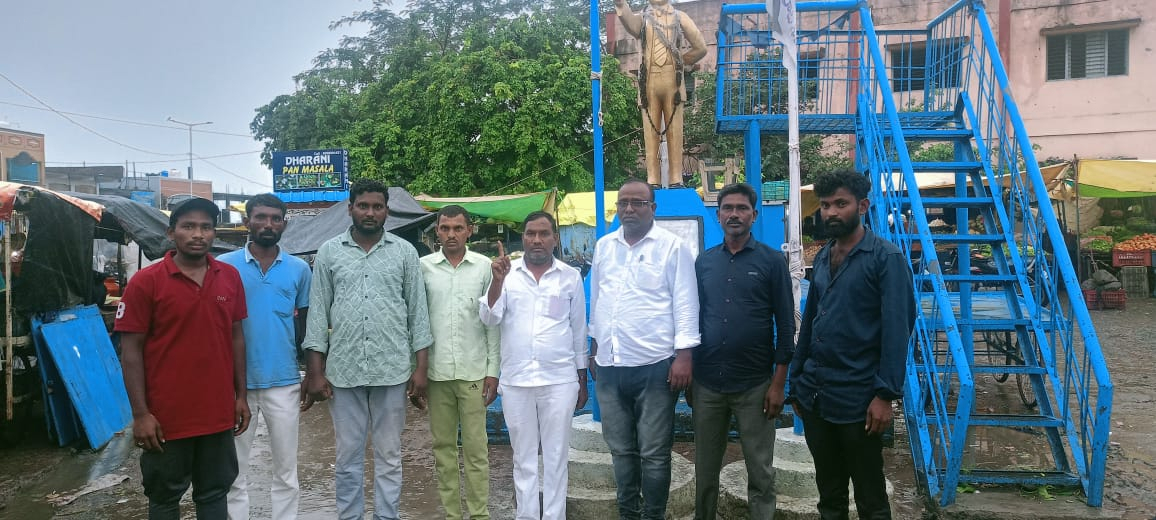Building a Personal Brand as a Reporter!
In today’s digital age, establishing a personal brand is essential for reporters looking to stand out in a competitive media landscape. A strong personal brand not only helps journalists connect with their audience but also enhances their credibility and professional opportunities. Here are some key strategies for reporters to establish their presence on social media and build a personal brand:
1. Define Your Niche
• Identify Your Focus: Determine what specific topics or areas of reporting you are passionate about and want to be known for (e.g., politics, technology, health, or community issues). A clear niche helps you attract a targeted audience.
• Create a Unique Voice: Develop a distinctive writing style and tone that reflects your personality and perspective. This will make your content more relatable and memorable.
2. Optimize Social Media Profiles
• Choose the Right Platforms: Select social media platforms that best suit your audience and content type. Twitter is great for breaking news and quick updates, while Instagram and TikTok can be effective for visual storytelling.
• Craft a Compelling Bio: Write a concise and engaging bio that summarizes your expertise, interests, and what you offer as a journalist. Include links to your portfolio, website, or published articles.
• Use Professional Photos: Invest in high-quality profile and cover photos that convey professionalism. A clear, approachable image helps build trust with your audience.
3. Create Engaging Content
• Share Your Work: Regularly post links to your articles, reports, or multimedia content. Highlight key takeaways and encourage discussions around your work.
• Utilize Different Formats: Experiment with various content formats, such as videos, infographics, and podcasts, to engage your audience in different ways.
• Tell Personal Stories: Share behind-the-scenes glimpses of your reporting process, challenges you’ve faced, and lessons learned. Personal stories humanize your brand and foster connections with your audience.
4. Engage with Your Audience
• Respond to Comments: Take the time to interact with your followers by responding to their comments and questions. This builds a sense of community and encourages further engagement.
• Participate in Discussions: Join conversations around trending topics and issues relevant to your niche. Share your insights and contribute meaningfully to discussions in your field.
• Collaborate with Others: Connect with fellow journalists, influencers, and industry experts. Collaborations can help you reach new audiences and enhance your credibility.
5. Consistency is Key
• Maintain a Regular Posting Schedule: Consistency helps keep your audience engaged and establishes you as a reliable source of information. Create a content calendar to plan and organize your posts.
• Stay True to Your Brand: Ensure that your messaging and content align with your brand values and identity. Authenticity resonates with audiences and builds trust over time.
6. Monitor Your Online Presence
• Track Engagement Metrics: Use analytics tools to monitor the performance of your posts. Understanding what resonates with your audience can help refine your content strategy.
• Be Mindful of Reputation: Regularly assess your online reputation and address any negative feedback constructively. Maintaining a positive image is crucial for a successful personal brand.
7. Network and Build Relationships
• Attend Industry Events: Participate in conferences, workshops, and webinars related to journalism. Networking with other professionals can lead to valuable connections and opportunities.
Use BMA: Use BMA to connect with fellow journalists, editors, and industry leaders. Share your work, insights, and engage in discussions related to journalism
#Bharat Aawaz
Building a Personal Brand as a Reporter!
In today’s digital age, establishing a personal brand is essential for reporters looking to stand out in a competitive media landscape. A strong personal brand not only helps journalists connect with their audience but also enhances their credibility and professional opportunities. Here are some key strategies for reporters to establish their presence on social media and build a personal brand:
1. Define Your Niche
• Identify Your Focus: Determine what specific topics or areas of reporting you are passionate about and want to be known for (e.g., politics, technology, health, or community issues). A clear niche helps you attract a targeted audience.
• Create a Unique Voice: Develop a distinctive writing style and tone that reflects your personality and perspective. This will make your content more relatable and memorable.
2. Optimize Social Media Profiles
• Choose the Right Platforms: Select social media platforms that best suit your audience and content type. Twitter is great for breaking news and quick updates, while Instagram and TikTok can be effective for visual storytelling.
• Craft a Compelling Bio: Write a concise and engaging bio that summarizes your expertise, interests, and what you offer as a journalist. Include links to your portfolio, website, or published articles.
• Use Professional Photos: Invest in high-quality profile and cover photos that convey professionalism. A clear, approachable image helps build trust with your audience.
3. Create Engaging Content
• Share Your Work: Regularly post links to your articles, reports, or multimedia content. Highlight key takeaways and encourage discussions around your work.
• Utilize Different Formats: Experiment with various content formats, such as videos, infographics, and podcasts, to engage your audience in different ways.
• Tell Personal Stories: Share behind-the-scenes glimpses of your reporting process, challenges you’ve faced, and lessons learned. Personal stories humanize your brand and foster connections with your audience.
4. Engage with Your Audience
• Respond to Comments: Take the time to interact with your followers by responding to their comments and questions. This builds a sense of community and encourages further engagement.
• Participate in Discussions: Join conversations around trending topics and issues relevant to your niche. Share your insights and contribute meaningfully to discussions in your field.
• Collaborate with Others: Connect with fellow journalists, influencers, and industry experts. Collaborations can help you reach new audiences and enhance your credibility.
5. Consistency is Key
• Maintain a Regular Posting Schedule: Consistency helps keep your audience engaged and establishes you as a reliable source of information. Create a content calendar to plan and organize your posts.
• Stay True to Your Brand: Ensure that your messaging and content align with your brand values and identity. Authenticity resonates with audiences and builds trust over time.
6. Monitor Your Online Presence
• Track Engagement Metrics: Use analytics tools to monitor the performance of your posts. Understanding what resonates with your audience can help refine your content strategy.
• Be Mindful of Reputation: Regularly assess your online reputation and address any negative feedback constructively. Maintaining a positive image is crucial for a successful personal brand.
7. Network and Build Relationships
• Attend Industry Events: Participate in conferences, workshops, and webinars related to journalism. Networking with other professionals can lead to valuable connections and opportunities.
Use BMA: Use BMA to connect with fellow journalists, editors, and industry leaders. Share your work, insights, and engage in discussions related to journalism
#Bharat Aawaz












